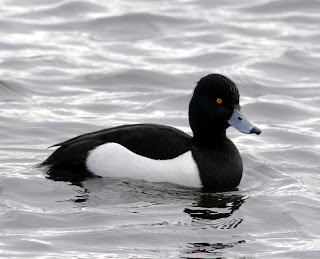I couldn’t resist more than a peek at the new Crossley, and the chance to tell Another Bird Blog readers about this exciting book, plus share my initial impressions of it, even though the regional blogathon isn’t until November.
The Crossley ID Guide: Britain & ireland
This new work follows the same format as the previous two published for the North American market, volumes which received an enthusiastic welcome for their innovative, almost revolutionary style. The Crossley ID guides use photographic techniques to display a species as it looks in the field and in a typical environment, rather than the more usual artistic but ”flat” portrayal found in traditional field guides.
The first thing to note is that this new Crossley is aimed mainly at a UK market of “beginner and intermediate birders, yet suitable for all levels”. This qualifying note explains why some 300 species are covered rather than the 598 or so species on The British List, the number that might be encountered in half a lifetime of determined birding rather than the 300 or so which the average birder might see in a series of normal years. Because of the stated target audience this would seem an eminently logical and sensible way of selecting the species featured. 300 species alone is quite challenging to a novice birder and the only issue I have found with the species featured is the authors potentially confusing treatment of the redpolls.
Species are displayed by “proportional representation” i.e. the more common a species is the more space it takes up, typically a full page for very common birds, half a page for scarce species and a quarter page for rarer species.
The next thing to note is that the book doesn’t use a traditional taxonomic sequence, which as the authors (Richard Crossley and Dominc Couzens) point out, does not always makes sense in the field. Instead the book splits species into just seven groups based on habitat and physical similarities so that they can be more easily compared. Again, the authors make the point that a bird’s appearance is largely influenced by its environment and therefore the taxonomic order is not necessarily broken too often.
So the species accounts use two simple main headings of Waterbirds or Landbirds. Sub-headings break these down into Swimming Waterbirds, Flying Waterbirds, Walking Waterbirds, Upland Gamebirds, Raptors, Miscellaneous Larger & Aerial Landbirds and finally, Songbirds. This proves a simple but effective innovation, helped by a corresponding opening section where all the species are displayed at their relative size. These pages are a handy quick reference for a novice birder struggling with for instance, a beach full of waders or a freshwater packed with wildfowl.
I picked out just a couple of double page plates from Crossley ID Guide: Britain & Ireland to whet readers’ appetite. The first one, Flying Waterbirds, is taken from the opening sequence of pages which show birds at their relative size, structure and shape, that element of “jizz” so vital to the “mystery” of bird identification.
Flying Waterbirds - The Crossley ID Guide: Britain & ireland
The second shows Goosanders and Red-breasted Mergansers in absolutely typical, accurate and realistic scenes. Those Goosanders could well be on Conder Pool, and the Red-breasted Mergansers look for all the world to be ensconced on Fleetwood Marine Lake.
Goosander and Red-breasted Merganser - The Crossley ID Guide: Britain & ireland
The third plate shows Purple Sandpipers with Turnstones, a characteristic situation which will help new birders to find and identify Purple Sandpipers in their strictly coastal environment. Ruffs are shown in many of their distinctive changes of both size and appearance, a wader designed to trap the unwary or inexperienced. With this page in front of them I would hazard a guess that many “beginner and intermediate birders, yet suitable for all levels” birders would quite happily put a name to the strange looking bird in front of them.
Purple Sandpiper and Ruff - The Crossley ID Guide: Britain & ireland
I just realised, I didn’t mention the textual description and explanation which accompanies each species. The accounts are accurate, concise and more than adequate to aid identification, especially since on turning to a species the text is relegated to second place as the eye and the brain automatically focus on the birds. It’s reality birding where visual learning is the norm and seeing is believing.
I wish I had time and space to feature many more plates from Crossley ID Guide: Britain & Ireland as many of them are quite superb, especially the wildfowl and waders. Maybe the best way to experience and enjoy them is to beg, steal or borrow this book for yourself as soon as it is available; however I’m sure that Princeton University Press would prefer that you buy it. To help you decide they have published a selection of plates of common garden birds to download at Princeton University Press.
Princeton's timing of release for this book is either fortuitous or a master stroke because the book will make a superb Christmas gift for a youngster, a kid of a certain age showing an early interest in the real world rather than the electronic domain. Also I can see this book being a huge hit with folk of an older generation, maybe those who leave work with newly found time on their hands but with a desire to learn about birds. This book is an ideal companion with which to both absorb and enjoy their new found love.
There’s more about Crossley ID Guide: Britain & Ireland in early November. Meanwhile I’m putting my copy in the car, then if I get stuck in a downpour at least I can carry on birding by browsing the pages of this splendid book.



















































